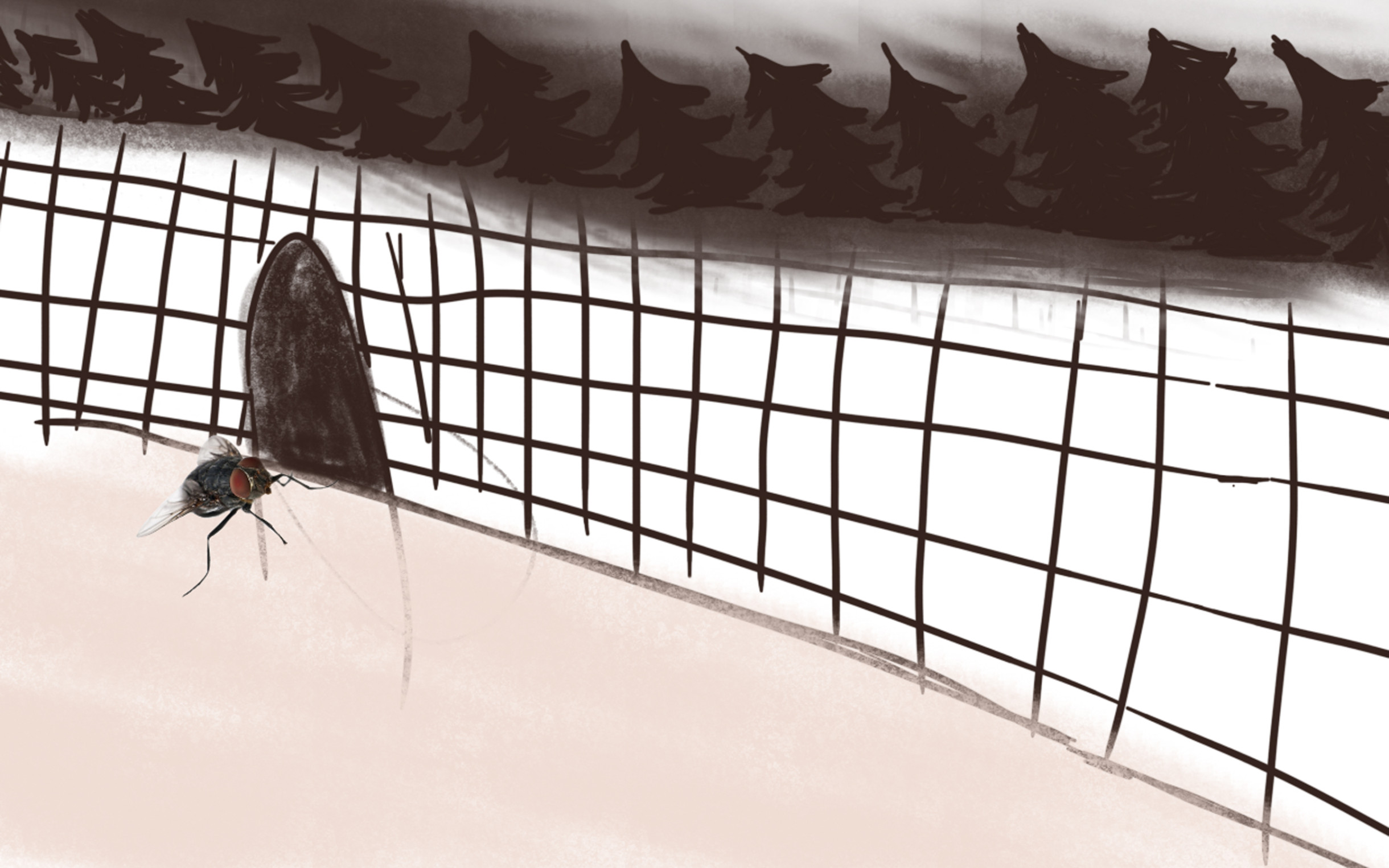Marie Štefáčková↓
Gallery
Studies
| 2019–2022 | Intermedia 3, AVU (Tomáš Vaněk) |
| 2021 | Painting 4, AVU |
| 2018–2019 | stáž v Ateliéru hostujícího umělce (David Maljkovic), UMPRUM |
| 2015–2019 | Ateliér malby, UMPRUM |
| 2018 | stáž v Ateliéru intermediální konfrontace, UMPRUM |
About the work
From you back to you: Hello death, my old friend. You know ditch full of mother-killing dust. You encourage the sun to make love. The thought of a young man drives you inward. Black child, to the house of happiness of your sorrow and late kneeling.
The central theme of my work is a partially fabricated situation, based on the real-life experiences of several people who have gone through some kinds of violence in their lives, psychological or physical. It seems that not many of us have grown up surrounded by the boundless love of loved ones from the beginning of our lives, with parents who used balance, empathy, support and a willingness to help in the adverse stages of childhood and adolescence. Everyone has experienced various disappointments, pain, physical and mental difficulties at some stage in their lives, even repeatedly. We all struggle with these problems and we either win or lose (and cope with it), or reject this resigned image. However, in a situation where the negative constellations accumulate rather than recede, our mind and body tend to react with irritation, anger, hitting, crying, etc. At a certain point, such a person has no choice but to come to a decision, to choose whether to keep fighting or to give up, to adapt, to withdraw inwards, to go mad or to choose the very last option and voluntarily leave their body.
I have therefore created five short stories inspired by difficult psychological dilemmas. Each of the five stories deals with a different type of traumatic experience and reliving, but despite the individual stories, there are many similarities in the discomfort, pain, recurring memories, smells, touches, and thoughts that accompany the bearer every step of the way. I have divided these wounds, often invisible to others, hidden behind the warm smiles of everyday life, into five thematic areas:
Proximity and fear of death, but also the exciting longing for it.
Unhealthy, unbalanced relationship between mother and daughter.
Sexual abuse in childhood and its re-enactment in adulthood.
The hatred of men that builds over time.
Frustration at the loss of offspring and especially the inability to conceive again.
* How to talk about such things? How to forgive oneself? How do you forgive the perpetrator? How to feel? How to look others in the eye without shame? How not to despise one‘s own life?
Each of these texts is based on the real experiences of people in my surroundings, with whom I co-created the form of a new fairy-tale individual, a fictional being with a story of his or her own. Part of the effort was to co-create through communication a character of a creature into which it would be possible to project, to enchant, to enclose (at least partially) the psychological burden of the person in question. In psychiatry, discussion and guided verbal reenactment of the „patient‘s“ particular problem is one possible option for treating trauma, but this kind of help is almost never enough on its own. Consequently, the field has been lately turning to combined therapy, that is, the involvement of other effective techniques and helping strategies - from individual or group therapy, neurofeedback or art therapy to yoga and many others.
The individual stories were translated into story-like language, a kind of mediated communication, both in the texts and in the subsequent audio recordings. In order to approximate as closely as possible the sense of nothingness and self-abasement of the characters presented, I gave the main heroes and heroines and their characters the form of flies. All the stories were eventually placed in a healing-circle in the woods, on a little pallet where the weary can sit and just listen, thinking about the uncommunicable. Together, firmly planted, entwined in the root systems of the trees, one can ponder the question of one‘s own and everyone‘s mental health, and even the extent to which we understand ourselves and others, or what people hide deep inside themselves.



